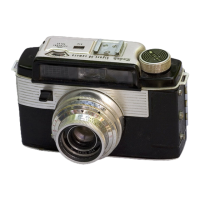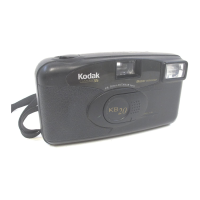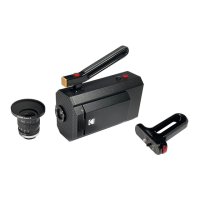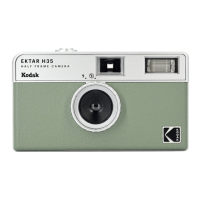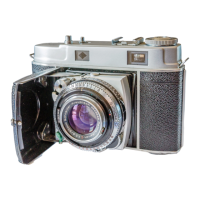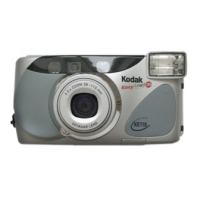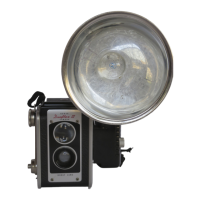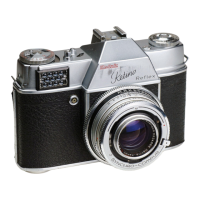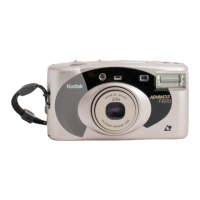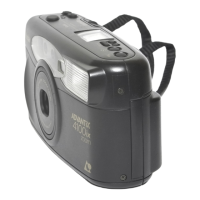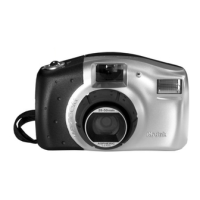Jeaving the
DIAPHRAGM
as
the only exposure control
(Figure
23,
page 25).
The table
on
page 76
and
the
EXPOSURE
GUIDE
on
the front
of
the
camera give the proper diaphragm settings for the regular Cine-Kodak Panchro-
matic
Film
when the camera is run
at
normal speed
(I6)
and
when the shutter
is
set
at
OPEN.
CAMERA
SPEED:
VARIED
SHUTTER:
OPEN
CAMERA
speed is controlled by turning the SPEED DIAL (Figure 23,
page
25)
until
the
index line is
at
the
dot
nearest to
the
figure in-
dicating the desired speed.
Camera speed controls the speed
of
the action on the screen. Chang-
ing
the camera speed alters the exposure, necessitating changed dia-
phragm
to rectify
the
exposure.
Probably
the
only time you
will
use
camera speed
as
an exposure control
will
be
when
using speed 8 to pro-
long exposure
where
lighting
conditions are very ppor. When this is
done you sacrifice normal action, so you must
warn
the subject
to
move
slowly to avoid rapid, jerky motion pictures.
When
the
camera speed is increased, each frame on the film remains
behind the lens for a shorter
time; thus, exposure is decreased.
If
you
decide to use speed
32
instead
of
speed 16, you
cut
the duration
in
half.
Therefore, to give
the
film sufficient exposure, you must
let
twice
as
much
light
pass
through
the lens by using one diaphragm larger
than
the EXPOSURE
GUIDE
recommends for normal speed (16);
if
f.ll
is
recommended, open
up
to
f.8.
R U L
E:
For each step increase in camera speed, increase the size
of
the
diaphragm opening by one stop.
Similarly, for each step
decrease
in camera speed,
decrease
the
size
of
the
diaphragm opening by one stop.
See
page
35
for a more comprehensive description of camera speeds.
One
of
the
uses
of
the variable
shutter
is
that
of
an
extra
exposure
control. This is explained more fully on page 36.
26

